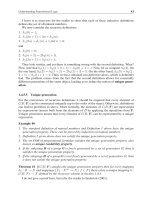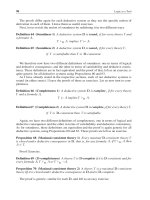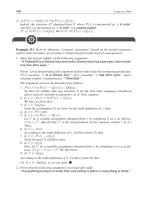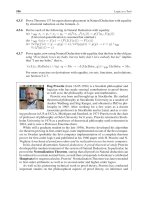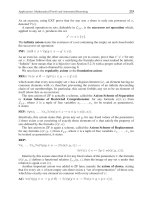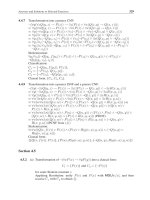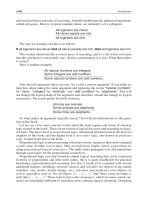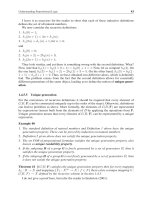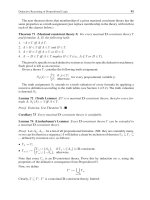Logic as a tool a guide to formal logical reasoning ( PDFDrive ) 162
Bạn đang xem bản rút gọn của tài liệu. Xem và tải ngay bản đầy đủ của tài liệu tại đây (71.94 KB, 1 trang )
138
Logic as a Tool
4. ∃xP (x) ∧ ∃xQ(x) ∃x(P (x) ∧ Q(x)).
Indeed, the structure N obtained from N where P (x) is interpreted as ‘x is even’
and Q(x) is interpreted as ‘x is odd’ is a counter-model:
∃x(P (x) ∧ Q(x)).
N |= ∃xP (x) ∧ ∃xQ(x), but N
Example 111 Here we illustrate “semantic reasoning”, based on the formal semantics
of first-order formulae, for proving or disproving first-order logical consequences.
1. Show the logical validity of the following argument:
“If Tinkerbell is a Disney fairy and every Disney fairy has blue eyes, then someone has blue eyes.”
Proof. Let us first formalize the argument in first-order logic by introducing predicates:
P (x) meaning “x is a Disney fairy”, Q(x) meaning “x has blue eyes”, and a
constant symbol c interpreted as “Tinkerbell.”
The argument can now be formalized as follows:
1. P (c) ∧ ∀x(P (x) → Q(x)) |= ∃yQ(y ).
To show its validity take any structure S for the first-order language introduced
above and any variable assignment v in S. Now, suppose
2. S , v |= (P (c) ∧ ∀x(P (x) → Q(x)).
We have to show that:
3. S , v |= ∃yQ(y ).
From the assumption (2) we have, by the truth definition of ∧, that:
4. S , v |= P (c) and
5. S , v |= ∀x(P (x) → Q(x)).
Let v be a variable assignment obtained from v by redefining it on x as follows:
v (x) = cS . (Recall that cS is the interpretation of the constant symbol c in S.)
Then:
6. S , v |= P (x).
According to the truth definition of ∀, it follows from (5) that:
7. S , v |= P (x) → Q(x).
From (6) and (7) it follows that:
8. S , v |= Q(x).
Now, let v be a variable assignment obtained from v by redefining it on y as follows: v (y ) = v (x) = cS . We then have:
9. S , v |= Q(y ).
According to the truth definition of ∃, it follows from (9) that:
(3) S , v |= ∃yQ(y ), so we are done.
2. Prove that the following argument is not logically valid:
“If everything is black or white then everything is black or everything is white.”
